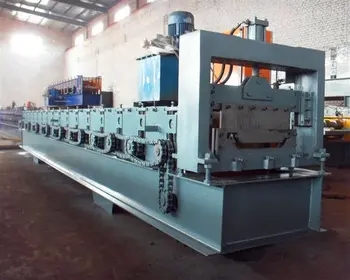
Understanding Lip Channel Roll Forming Machines
Roll forming is a widely used manufacturing process that creates long strips of metal with specific cross-sectional profiles. Among the various applications of roll forming, the production of lip channels is particularly significant in the construction and manufacturing industries. A lip channel roll forming machine is a specialized equipment designed to produce lip channels efficiently and with high precision.
What is a Lip Channel?
A lip channel, often referred to as a C-channel or U-channel, is a type of structural steel or metal channel characterized by its distinctive lip or flange at the edges. These channels are commonly used in construction for framing, supports, and various structural applications due to their strength and versatility. Their unique shape allows for easy stacking, strength distribution, and can even act as a medium to facilitate the connection of other structural elements.
The Role of Lip Channel Roll Forming Machines
Lip channel roll forming machines are engineered to take flat sheets or strips of metal and shape them into lip channels through a series of sequential forming operations. The process involves feeding the metal strip through a series of rollers that progressively shape the material. Each set of rollers is designed to create a specific part of the channel profile, including the lip, web, and base.
The advantages of utilizing roll forming machines include 1. Efficiency The roll forming process allows for continuous production, which can significantly reduce manufacturing time compared to other methods like welding or punching. 2. Precision These machines offer high accuracy in shaping, ensuring consistent dimensions for each channel produced. 3. Material Conservation Roll forming minimizes waste as it utilizes the entirety of the metal strip being processed, unlike other forming methods that may require additional cuttings or adjustments. 4. Versatility A well-designed roll forming machine can be adjusted to produce various profiles, allowing manufacturers to cater to different customer needs or to adapt to different project specifications.

Key Features of Lip Channel Roll Forming Machines
1. Automatic Control Systems Modern machines are equipped with advanced automation and control systems that allow for seamless operation. Operators can monitor and adjust parameters in real-time, ensuring optimal performance. 2. Material Handling Systems The integration of material feeding and handling systems ensures that the metal strips are fed uniformly into the machine, enhancing the overall efficiency of the production line.
3. Customization Options Many manufacturers offer bespoke solutions that permit clients to specify the dimensions, material thickness, and other requirements for their lip channels, ensuring that the final product meets specific standards.
4. Post-Processing Stations Some advanced roll forming machines also incorporate post-processing features such as cutting, punching, and bending, enabling manufacturers to produce ready-to-use components right off the production line.
Conclusion
Lip channel roll forming machines play a crucial role in modern manufacturing, particularly in industries that rely on strong and reliable structural components. Their ability to produce high volumes with precision and efficiency makes them an indispensable part of metalworking and construction industries. As technology advances, we can expect further enhancements in these machines, including improved speed, reduced energy consumption, and greater versatility, ensuring their relevance for years to come. Ultimately, these machines not only boost production capabilities but also contribute to the overall quality and consistency that are essential in high-demand markets.